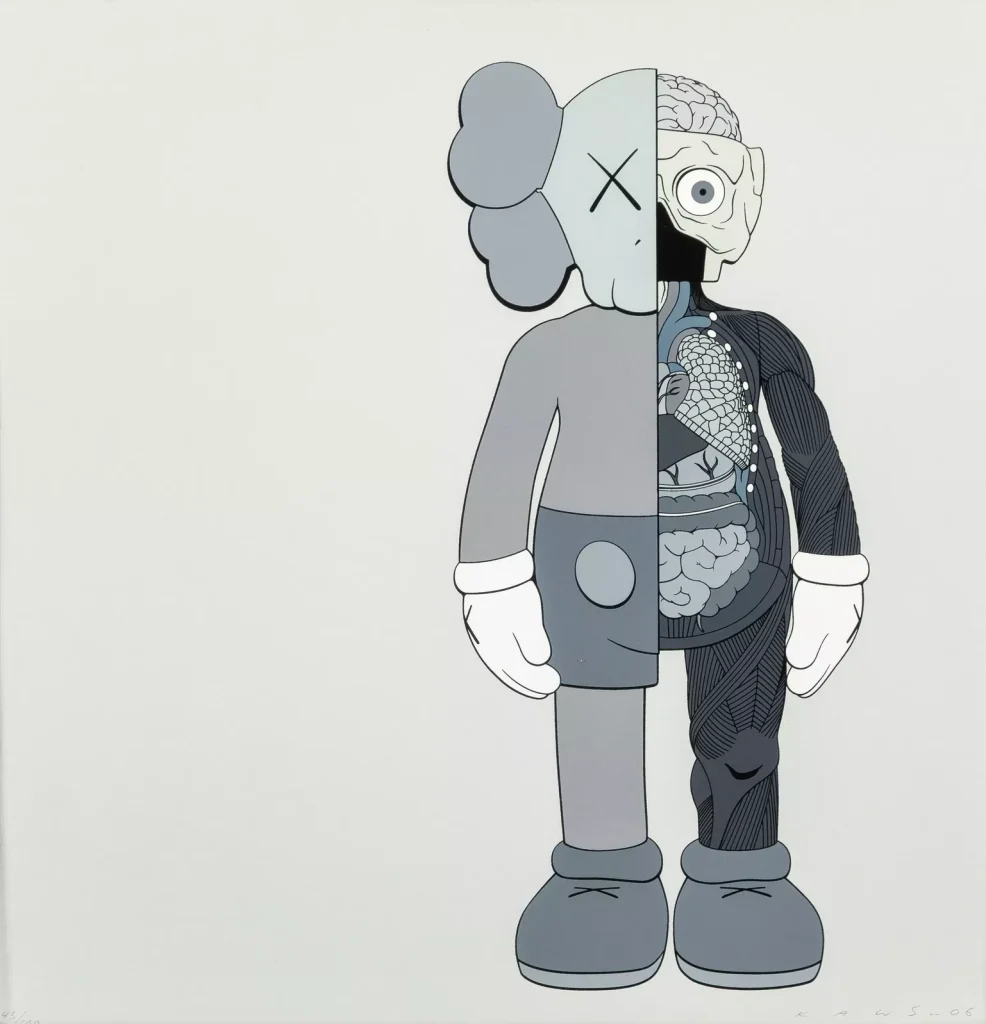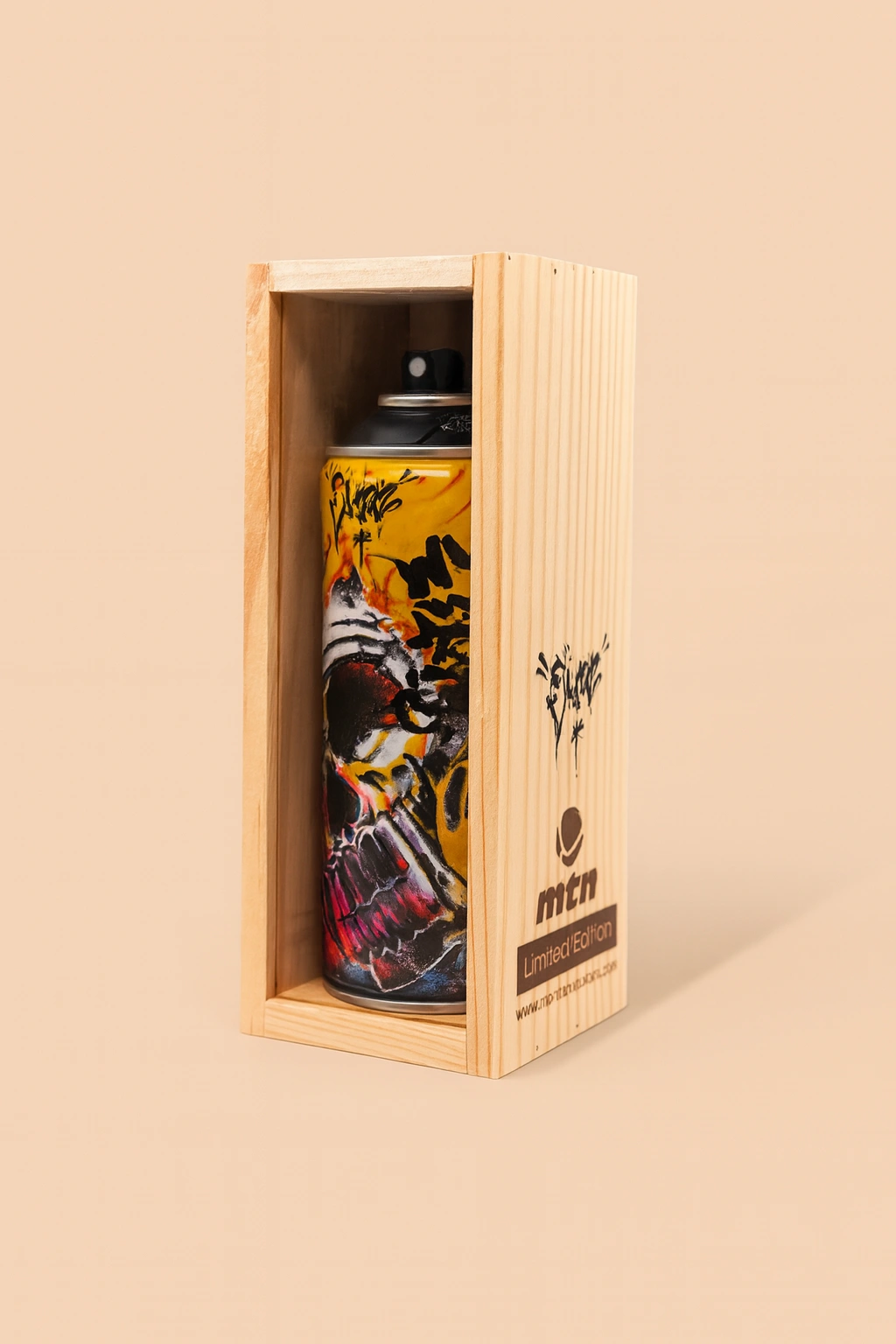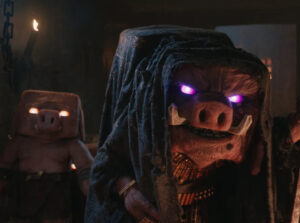In the realm of contemporary art and collectible culture, few figures have achieved the transcendent, cross-genre impact of Kaws. Born Brian Donnelly, the New Jersey-born artist has turned his graphic, street-inspired visual language into a global phenomenon. Among his most iconic works is the Dissected Companion series, and within that, the 2006 grey variant stands out as a touchstone for collectors and critics alike.
The Companion: A Universal Symbol
Kaws introduced the Companion figure in 1999, reimagining familiar cartoon silhouettes through a lens of existential angst and urban culture. The figure’s slumped posture, crossed-out eyes, and simplified, approachable form resonated deeply, speaking to a generation raised on cartoons and saturated media imagery. The Companion became an avatar for vulnerability and alienation, wrapped in a deceptively playful package.
The Act of Dissection
The Dissected Companion series, first released in 2006, pushed this dialogue further by literally splitting the character open. In Dissected Companion (Grey), the figure is divided vertically: one half remains the classic, intact Companion, while the other half reveals an exposed interior, complete with anatomical organs rendered in stylized detail. The grey colorway adds a moody, neutral tone, allowing the viewer to focus on the interplay between exterior identity and interior truth.
This dissection is no mere shock tactic; it is a thoughtful exploration of identity, mortality, and the vulnerability that underpins our constructed selves. The dissected half is not gruesome but instead rendered with Kaws’ characteristic clean lines and graphic sensibility. By merging the cartoonish outer shell with an almost medical diagram of the inside, Kaws challenges viewers to consider what lies beneath the surfaces we present to the world.
Material and Technique
Dissected Companion (Grey) was produced as a screen print on paper, maintaining the flat, vibrant aesthetic typical of Kaws’ two-dimensional works. The restrained palette — predominantly grey tones punctuated by subtle accents in the anatomical section — enhances the figure’s sense of quiet introspection.
Kaws’ choice of screen printing aligns with his roots in graffiti and graphic design, where repetition and accessibility are key. By using a method that allows for multiple editions, Kaws democratizes his work, bridging the gap between high art and popular culture. Yet, each edition still holds the allure of exclusivity, feeding the fervor of global collectors.
Culture
At the time of its release in 2006, Dissected Companion (Grey) marked a pivotal moment in Kaws’ trajectory. It solidified his shift from underground artist to mainstream cultural force. This figure blurred the lines between fine art, street art, and designer toys, contributing to the broader movement that challenged traditional hierarchies in art.
The Companion, especially in dissected form, became a mirror reflecting the psychological complexities of modern existence. The work resonated with millennials navigating an increasingly digital, hyper-exposed world. The notion of being split open, revealing an inner self so openly, metaphorically captures our contemporary struggles with authenticity and self-presentation.
From Galleries to the Global Market
Over the years, Dissected Companion (Grey) has traveled far beyond the gallery walls. Kaws’ works are regularly seen in major auctions, often fetching six-figure sums. The figure has also appeared in flow with fashion brands, large-scale sculptures in public parks, and installations that draw crowds worldwide.
Its commercial success does not diminish its conceptual weight. Instead, it underscores Kaws’ ability to connect with a broad audience, turning an introspective, even melancholy, artistic statement into a global cultural icon. The Companion, with its dissected interior on display, has become shorthand for a shared, almost universal vulnerability.
The Grey Aesthetic
The grey colorway of this work holds particular significance. While Kaws has produced Dissected Companions in multiple colors (including brown and black), grey offers a subdued neutrality that accentuates the piece’s contemplative tone. It avoids the bright, toy-like cheerfulness of other colors, inviting viewers to sit with the emotional and philosophical undertones of the figure.
Grey embodies ambiguity — neither black nor white, it resides in an in-between space. This mirrors the existential state the Companion inhabits: caught between cartoon fantasy and human reality, exterior playfulness and interior anxiety.
Continuing Legacy
Nearly two decades after its release, Dissected Companion (Grey) remains a central piece in the Kaws universe. Its themes have grown even more relevant in an era dominated by social media performances and personal branding. As society becomes more obsessed with curating external personas, the dissected figure serves as a stark reminder of the complex humanity beneath each carefully constructed surface.
Collectors continue to revere the piece, not merely for its market value but for its emotional resonance. In many collections, this work is displayed as a centerpiece — a declaration of both artistic taste and an embrace of vulnerability as a form of strength.
Impression
Kaws’ Dissected Companion (Grey), 2006 is more than a collectible art piece; it is a contemporary symbol of self-examination and culture commentary. By stripping away the facade and presenting the anatomical interior, Kaws forces viewers to confront uncomfortable yet universal truths about identity and mortality.
This work bridges the skittish aesthetics of childhood with the sobering introspection of adulthood. It is as much about what it sequesters as what it reveals, inviting each viewer to project their own interpretations and feelings onto its simplified yet deeply complex form.
Ultimately, Dissected Companion (Grey) stands as one of Kaws’ most iconic and emotionally resonant works. It represents a unique synthesis of art, design, and cultured critique — a true testament to Kaws’ genius in transforming a simple cartoon-inspired figure into a global conversation about what it means to be human.
No comments yet.








